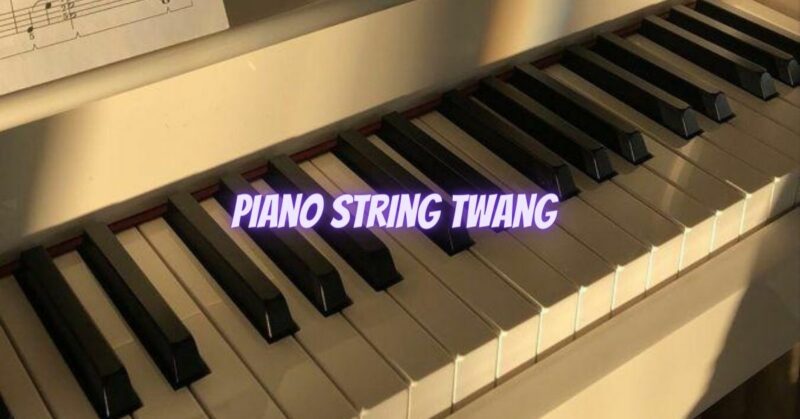Piano string twang is an undesirable sound that can occur when playing the piano. It is often described as a metallic or buzzing noise that accompanies the intended note. This phenomenon can be frustrating for pianists and can diminish the overall musical experience. To address piano string twang effectively, it is essential to understand its causes and implement appropriate solutions.
Causes of Piano String Twang:
- Worn Strings: Over time, piano strings can wear out due to continuous use and contact with the hammers. Worn strings lose their elasticity and are more prone to twang.
- Improper Installation: If piano strings are not installed correctly during repairs or replacements, they may not be aligned properly, leading to twanging when struck.
- Damaged Bridge: The bridge is a critical component that transfers vibrations from the strings to the soundboard. If the bridge is damaged or has cracks, it can cause twanging sounds.
- Loose Bridge Pins: Bridge pins hold the strings in place at the bridge. If they become loose or misaligned, they can cause the strings to vibrate unevenly, resulting in twang.
- Soundboard Issues: The soundboard amplifies the vibrations of the strings to produce sound. If the soundboard is damaged or has cracks, it can affect the sound quality and lead to twang.
- Environmental Factors: Changes in humidity and temperature can cause the piano’s wooden components, including the soundboard, to expand or contract, affecting string tension and leading to twang.
- Dampers and Felt: Damaged or worn dampers or felt can cause strings to vibrate unintentionally, resulting in twanging sounds.
Solutions to Address Piano String Twang:
- Regular Tuning and Maintenance: Regular tuning by a qualified piano technician helps maintain the proper tension and pitch of the strings, reducing the likelihood of twanging.
- String Replacement: Worn or damaged strings should be replaced by a skilled technician to ensure the piano produces clear and harmonious tones.
- Proper Installation: Ensure that any string replacements or repairs are carried out by a professional to avoid improper installation that can cause twang.
- Bridge and Soundboard Inspection: Regularly inspect the bridge and soundboard for any signs of damage or wear, and address any issues promptly to prevent twanging.
- Humidity Control: Maintain consistent humidity levels in the piano’s environment to minimize the effects of environmental changes on the instrument.
- Dampers and Felt Maintenance: Regularly inspect and maintain the dampers and felt to ensure they function correctly and prevent unintended vibrations.
- Proper Voicing: Adjust the piano’s hammers through voicing to achieve the desired tone and reduce the likelihood of twanging.
- Avoiding Impact and Damage: Prevent accidents and damage to the piano strings by avoiding any impact or heavy objects coming into contact with them.
- Regular Cleaning: Keep the piano’s interior clean to remove dust and debris that could affect string vibrations and contribute to twanging sounds.
In conclusion, piano string twang can be effectively addressed by understanding its causes and implementing appropriate solutions. Regular maintenance, proper installation, and environmental control are essential to ensure the piano produces a smooth and beautiful sound, free from undesirable twang. For complex issues, it is advisable to seek the assistance of a qualified piano technician who can diagnose and resolve the problem effectively. With proper care and attention, the piano can continue to produce exquisite music for years to come.


